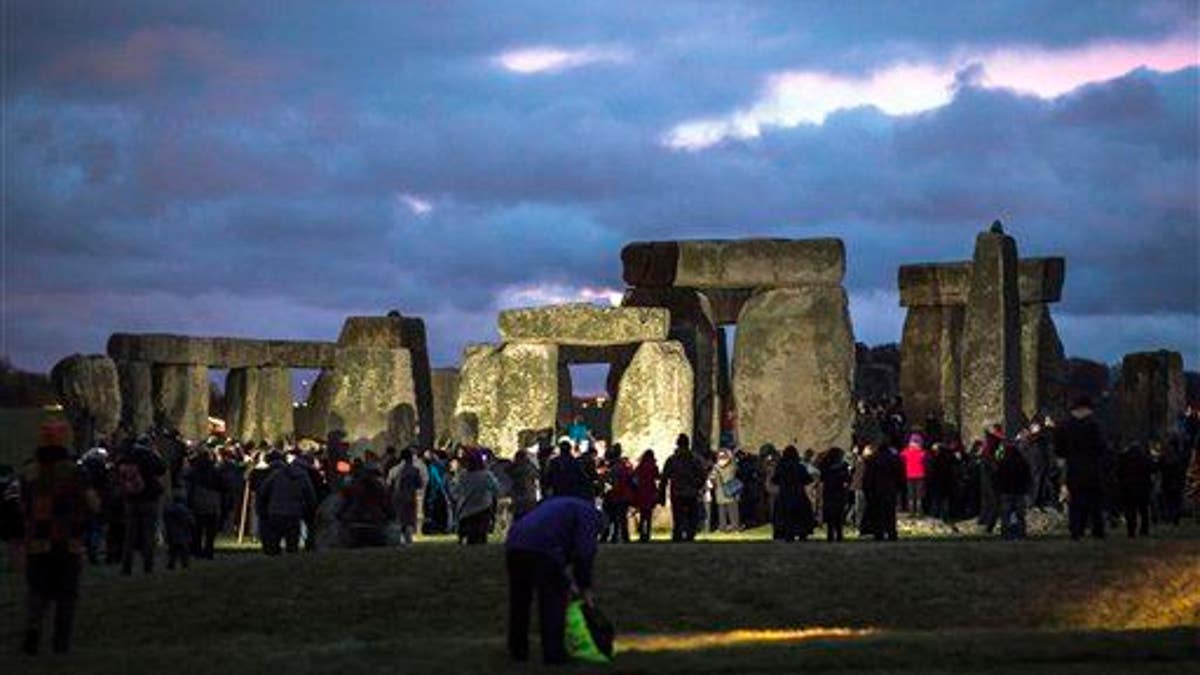
People enter the site at Stonehenge, southwest England, where people are gathering to celebrate the winter solstice, Dec. 22, 2014. (AP Photo/Ben Birchall/PA)
The mysterious origins of Stonehenge now have a new theory to add to the pile. Past speculations have included it being some sort of astronomical calendar, healing place, or Druid temple, and now an art critic and historian in the United Kingdom contends in a new book that the giant stones were really stilts for a raised, circular platform used for ceremonial worship.
Citing pharaohs and emperors whose feet weren't allowed to touch the ground, as well as skyward-reaching temples and places of worship, Julian Spalding (who is not an archaeologist) writes in Realisation: From Seeing to Understanding—The Origins of Art that "the people who built Stonehenge would never have performed celestial ceremonies on the lowly earth." "It’s a totally different theory which has never been put forward before," he tells the Guardian.
"We've been looking at Stonehenge the wrong way: from the earth, which is very much a 20th-century viewpoint. We haven't been thinking about what they were thinking about." Spalding's theory comes on the heels of a major discovery last year that the monument was once a complete circle from which stones have since been lost or removed, reports the Inquisitr.
His critics, however, say that while the idea is plenty intriguing, there is no evidence to support it. (Researchers concluded last year that Stonehenge was once a bustling hub.)
This article originally appeared on Newser: New Theory: Stonehenge's Stones Were Stilts
More From Newser
